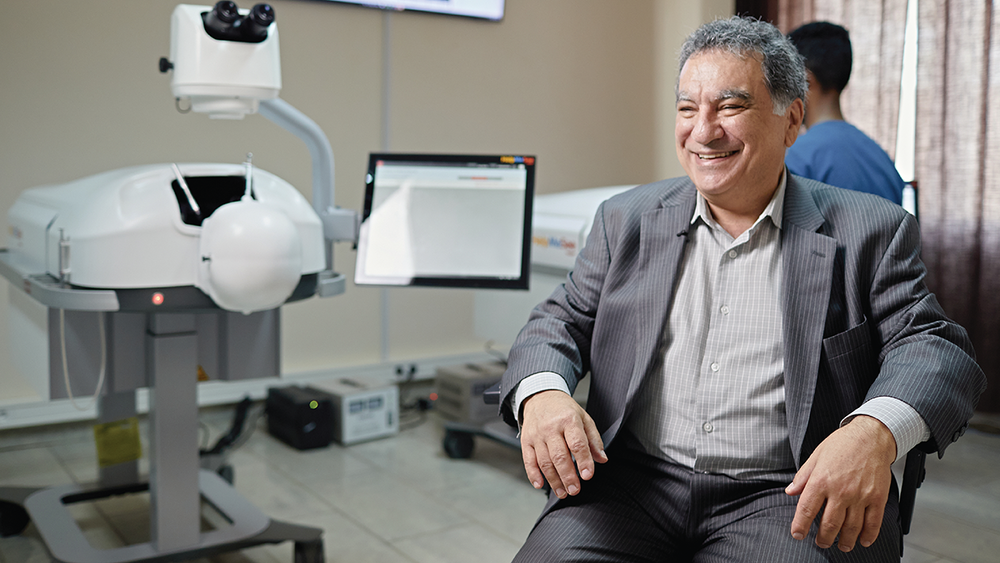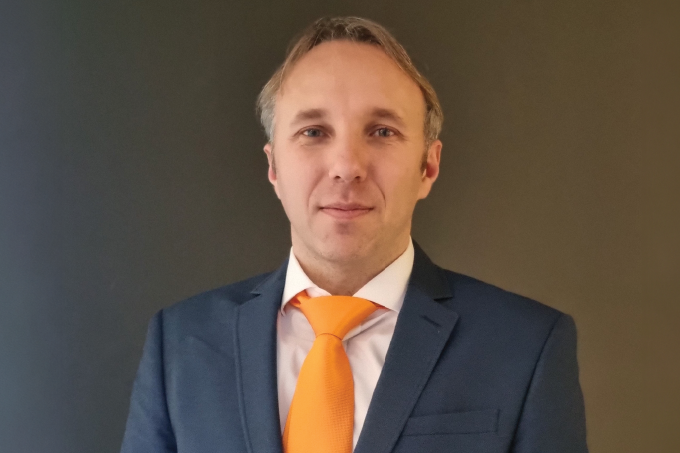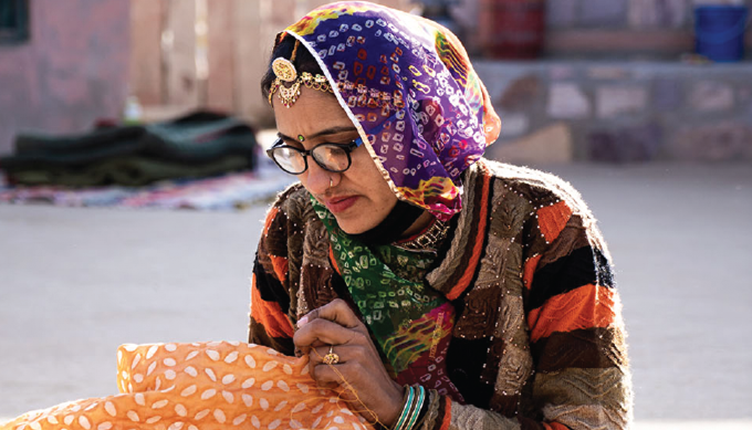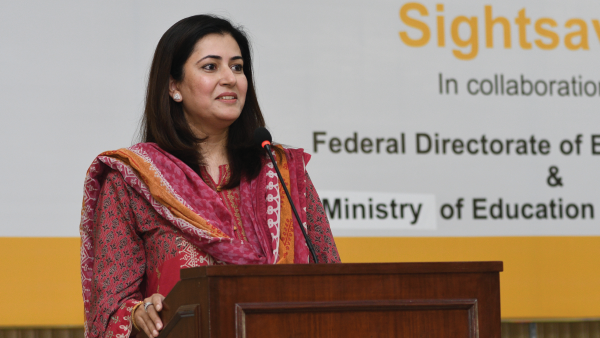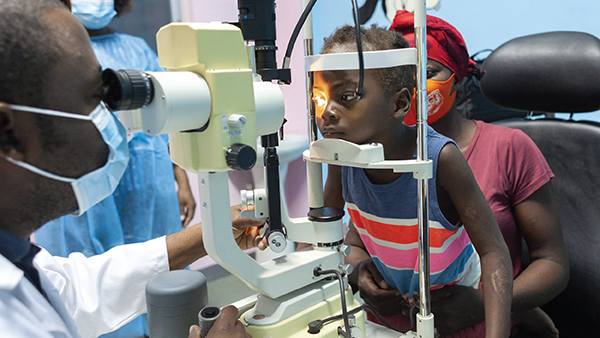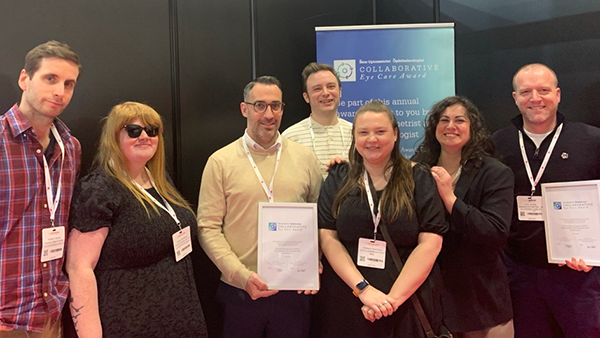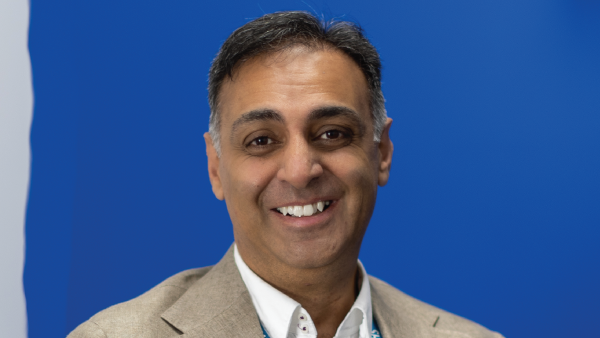HelpMeSee: Transforming Lives Through Training
Saro Jahani and Van Lansingh discuss how HelpMeSee’s simulation-based training is improving cataract surgery around the world
Untreated cataract is the leading cause of blindness worldwide – and, with rates anticipated to double by 2050 (1), the crisis is more pressing than ever. Although there is a global shortage of ophthalmologists, developing countries suffer the most. As an example, data from the International Council of Ophthalmologists indicate that, though the United States boasts 59 ophthalmologists per million people, in the Central African Republic this figure drops to just one per million (2).
When he first noticed this growing epidemic in the 1970s, Albert L. Ueltschi – pilot and founder of FlightSafety International – was inspired to create the HelpMeSee campaign. Drawing on his experience in simulation-based aviation training, Ueltschi decided to develop the Eye Surgery Simulator, which combines realistic computer graphics, haptic feedback and physics modeling to reproduce the cataract surgery experience. HelpMeSee aims to use the technology to train up to 30,000 cataract surgeons within their own communities to support the global fight against blindness.
Since its launch in 2010, training simulators have been deployed in places as diverse as China, Mexico, India, Madagascar, the US, and Denmark. In part one of this series, we talk to Saro Jahani, President and CEO, and Van Lansingh, Chief Medical Officer of HelpMeSee. Jahani and Lansingh detail the project’s inspiration and the global impact HelpMeSee has made on cataract surgery.
What was the inspiration for this project?
Saro Jahani: We are dealing with a growing global public health crisis. We have around 100 million people who are blind or visually impaired due to cataract and it is estimated that this number will double by 2050. It’s a tragic time for humanity and we need to fix the problem before it gets worse. This crisis doesn’t only affect patients; it also impacts the economy, which suffers a loss of US $450 billion annually as a result of cataract, according to the International Association for the Prevention of Blindness (IAPB) Vision Atlas.
HelpMeSee is a global nonprofit that has a strong presence in developing regions such as Africa, China, India and Mexico and in developed regions such as the US and Europe. Additional development work on the surgical simulator program means that it can now train surgeons on complications management, and in the spring of 2023, will include phacoemulsification as a critical component. With the tools we have, we can become a global enabler and train thousands of cataract specialists with unprecedented scale .
Our history goes back to Albert Ueltschi, the founder of FlightSafety International and his son, James Ueltschi. This company created the simulation-based training tools necessary to train thousands of pilots and was so successful that the founders were able to use the proceeds to create HelpMeSee. Today, we are working with global partners to eradicate cataract blindness. I believe that we have the passion, knowledge, willingness and partnerships necessary to tackle such a big problem.
Van Lansingh: I and other international experts are working with Rupert Bourne (Anglia Ruskin University, Cambridge, UK), who leads the Vision Loss Expert Group on the Global Burden of Disease. We’re currently collaborating on new estimates surrounding cataract prevalence, but no number – whether it’s 30 million or 50 million – conveys the suffering people endure on a personal or a family level. And though the good news is that the prevalence has declined, the numbers are still there and may increase in future.
Sadly, one thing population-based studies have shown is that, in many parts of the world, the results of cataract surgery are less than ideal. In some cases, they’re very poor. Simulation-based training in ophthalmology – and in many other areas of medicine – has reduced the learning curve to enable higher-quality procedures. We focus a lot on the numbers, but sometimes we forget that the essential component is quality.
How do you create partnerships with institutions and organizations in different parts of the world?
SJ: We know that doctors listen to doctors – so that is our strategy. We have attracted and recruited some of the best ophthalmic scientists from Africa, China, India, Europe and the US. Our message is being communicated by the experts of the world to the expert communities of the world. Through their reliability, we gain the respect we need as a delivery organization that wants to make a difference. We also publish research papers that outline the importance of having a program like the one HelpMeSee offers. We see quality not as an act, but as a lifestyle. That’s why it has taken us 12 years to get here – quality takes time.
Can you speak about your partnership with the Mexican Institute of Ophthalmology (IMO) and how these training programs come to life?
VL: I think this is a good example of the process of simulation adoption. We now have a lead instructor for IMO but, when she first came to us, it took a while for her to adopt the simulation-based training model. It’s not an easy process; it takes time to integrate and absorb it – and to demonstrate to institutions that simulation-based training is as valuable as time spent in the clinic or the operating room. We are helping regional training centers to see that simulation-based training not only makes sense but is the future of training. This process has not been quick, but we are now bearing the fruits of our labor – a true example of partnership.
SJ: In 2021, we trained almost 600 doctors. In 2022, we have trained more than 1,500, with plans to scale and provide exponentially more training in the years to come. We are introducing a new e-learning program, an eBook for Phacoemulsification, working on glaucoma and other surgical simulations, creating an Innovation and Centers of Excellence in multiple geographic locations, and expanding further into Africa, India and China. The idea is that, in 2023 and beyond, individual institutions should have the power to improve cataract surgery with full independence.
This article originally appeared in The Ophthalmologist.
References
- R Varma et al., “Visual impairment and blindness in adults in the United States: demographic and geographic variations from 2015 to 2050,” JAMA Ophthalmol, 134, 802 (2016). PMID: 27197072.
- International Council of Ophthalmology, “Data on Ophthalmologists Worldwide.” Available at: bit.ly/3X6OXqo.
The New Optometrist Newsletter
Permission Statement
By opting-in, you agree to receive email communications from The New Optometrist. You will stay up-to-date with optometry content, news, events and sponsors information.
You can view our privacy policy here
Most Popular
Sign up to The New Optometrist Updates
Permission Statement
By opting-in, you agree to receive email communications from The New Optometrist. You will stay up-to-date with optometry content, news, events and sponsors information.
You can view our privacy policy here
Sign up to The New Optometrist Updates
Permission Statement
By opting-in, you agree to receive email communications from The New Optometrist. You will stay up-to-date with optometry content, news, events and sponsors information.
You can view our privacy policy here

